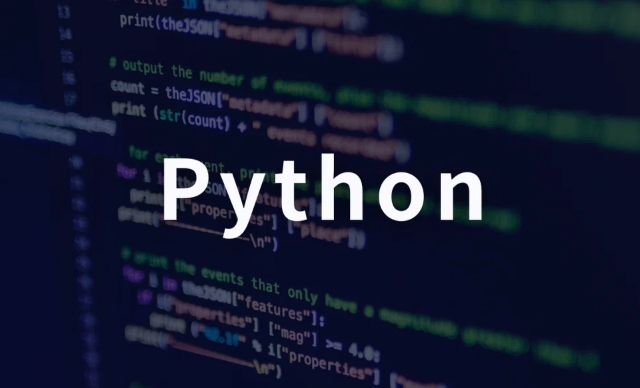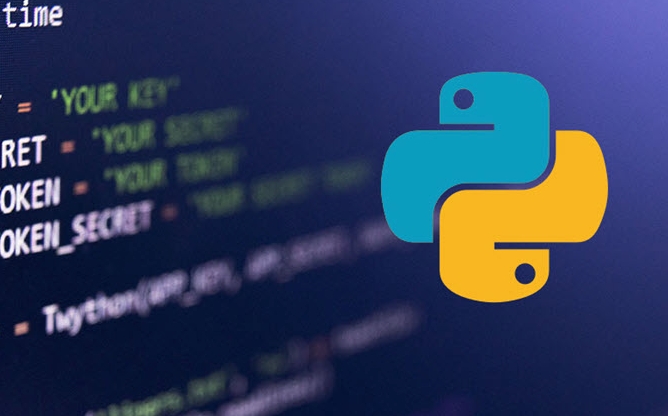python send email with attachment example
Aug 01, 2025 am 06:14 AMTo send emails with attachments, you need to use the smtplib and email modules, 1. Configure the sender, recipient, password and SMTP server; 2. Create a MIMEMultipart message and set the sender, recipient and subject; 3. Add the email body; 4. Use MIMEBase to read the file and encode it as base64, and add the attachment header; 5. Connect to smtp.gmail.com:587, enable TLS, log in and send the email, and finally close the connection. After the email is sent successfully, it will prompt "Email sent successfully!".

Sending an email with an attachment in Python is straightforward using the built-in smtplib and email modules. Below is a practical example that shows how to send an email with a file attachment (eg, a PDF, text file, etc.) via Gmail's SMTP server.

? Basic Example: Send Email with Attachment
import smtplib
from email.mime.multipart import MIMEMultipart
from email.mime.text import MIMEText
from email.mime.base import MIMEBase
from email import encoders
import os
# Email configuration
sender_email = "your_email@gmail.com"
sender_password = "your_password" # Use app password for Gmail
recipient_email = "recipient@example.com"
subject = "Email with Attachment"
body = "Hi, please find the attached file."
# File to attach
filename = "example.pdf" # Change to your file path
filepath = os.path.join(os.getcwd(), filename)
# Create message container
msg = MIMEMultipart()
msg['From'] = sender_email
msg['To'] = recipient_email
msg['Subject'] = subject
# Attach body text
msg.attach(MIMEText(body, 'plain'))
# Attach file
if os.path.exists(filepath):
with open(filepath, "rb") as attachment:
part = MIMEBase('application', 'octet-stream')
part.set_payload(attachment.read())
encoders.encode_base64(part)
part.add_header(
'Content-Disposition',
f'attachment; filename= {os.path.basename(filename)}'
)
msg.attach(part)
else:
print(f"File {filepath} not found!")
exit()
# Connect to Gmail's SMTP server
try:
server = smtplib.SMTP('smtp.gmail.com', 587)
server.starttls() # Enable security
server.login(sender_email, sender_password)
text = msg.as_string()
server.sendmail(sender_email, recipient_email, text)
server.quit()
print("Email sent successfully!")
except Exception as e:
print(f"Error: {e}")? Important Notes
- Gmail Users : If you're using Gmail, you can't use your regular password unless you enable 2FA and generate an App Password .
- Replace
your_passwordwith the app password , not your actual Google account password. - Make sure "Less secure app access" is disabled (it's deprecated; use app passwords instead).
? Supported Attachments
This works with any file type:
-
.pdf,.txt,.docx,.xlsx,.jpg,.zip, etc. Just update thefilenameandfilepath.
For
.docxor.xlsx, you might want to set the MIME type more specifically, butapplication/octet-streamworks universally.
?? Tips
- Use
os.pathorpathlibto handle file paths safely across OS. - You can attach multiple files using a loop.
- Always close the attachment file (using
with open()handles this).
? Multiple Attachments (Quick Snippet)
for file in ['file1.txt', 'image.jpg']:
if os.path.exists(file):
with open(file, "rb") as f:
part = MIMEBase('application', 'octet-stream')
part.set_payload(f.read())
encoders.encode_base64(part)
part.add_header('Content-Disposition', f'attachment; filename={file}')
msg.attach(part) That's it — this method is reliable and doesn't require external libraries like yagmail (though those can simplify things). Just pure Python standard libraries.
Basically just plug in your credentials, file, and email details — and it works.

The above is the detailed content of python send email with attachment example. For more information, please follow other related articles on the PHP Chinese website!

Hot AI Tools

Undress AI Tool
Undress images for free

Undresser.AI Undress
AI-powered app for creating realistic nude photos

AI Clothes Remover
Online AI tool for removing clothes from photos.

Clothoff.io
AI clothes remover

Video Face Swap
Swap faces in any video effortlessly with our completely free AI face swap tool!

Hot Article

Hot Tools

Notepad++7.3.1
Easy-to-use and free code editor

SublimeText3 Chinese version
Chinese version, very easy to use

Zend Studio 13.0.1
Powerful PHP integrated development environment

Dreamweaver CS6
Visual web development tools

SublimeText3 Mac version
God-level code editing software (SublimeText3)

Hot Topics
 A Developer's Guide to Maven for Java Project Management
Jul 30, 2025 am 02:41 AM
A Developer's Guide to Maven for Java Project Management
Jul 30, 2025 am 02:41 AM
Maven is a standard tool for Java project management and construction. The answer lies in the fact that it uses pom.xml to standardize project structure, dependency management, construction lifecycle automation and plug-in extensions; 1. Use pom.xml to define groupId, artifactId, version and dependencies; 2. Master core commands such as mvnclean, compile, test, package, install and deploy; 3. Use dependencyManagement and exclusions to manage dependency versions and conflicts; 4. Organize large applications through multi-module project structure and are managed uniformly by the parent POM; 5.
 Building RESTful APIs in Java with Jakarta EE
Jul 30, 2025 am 03:05 AM
Building RESTful APIs in Java with Jakarta EE
Jul 30, 2025 am 03:05 AM
SetupaMaven/GradleprojectwithJAX-RSdependencieslikeJersey;2.CreateaRESTresourceusingannotationssuchas@Pathand@GET;3.ConfiguretheapplicationviaApplicationsubclassorweb.xml;4.AddJacksonforJSONbindingbyincludingjersey-media-json-jackson;5.DeploytoaJakar
 css dark mode toggle example
Jul 30, 2025 am 05:28 AM
css dark mode toggle example
Jul 30, 2025 am 05:28 AM
First, use JavaScript to obtain the user system preferences and locally stored theme settings, and initialize the page theme; 1. The HTML structure contains a button to trigger topic switching; 2. CSS uses: root to define bright theme variables, .dark-mode class defines dark theme variables, and applies these variables through var(); 3. JavaScript detects prefers-color-scheme and reads localStorage to determine the initial theme; 4. Switch the dark-mode class on the html element when clicking the button, and saves the current state to localStorage; 5. All color changes are accompanied by 0.3 seconds transition animation to enhance the user
 python property decorator example
Jul 30, 2025 am 02:17 AM
python property decorator example
Jul 30, 2025 am 02:17 AM
@property decorator is used to convert methods into properties to implement the reading, setting and deletion control of properties. 1. Basic usage: define read-only attributes through @property, such as area calculated based on radius and accessed directly; 2. Advanced usage: use @name.setter and @name.deleter to implement attribute assignment verification and deletion operations; 3. Practical application: perform data verification in setters, such as BankAccount to ensure that the balance is not negative; 4. Naming specification: internal variables are prefixed, property method names are consistent with attributes, and unified access control is used to improve code security and maintainability.
 How to use Java MessageDigest for hashing (MD5, SHA-256)?
Jul 30, 2025 am 02:58 AM
How to use Java MessageDigest for hashing (MD5, SHA-256)?
Jul 30, 2025 am 02:58 AM
To generate hash values using Java, it can be implemented through the MessageDigest class. 1. Get an instance of the specified algorithm, such as MD5 or SHA-256; 2. Call the .update() method to pass in the data to be encrypted; 3. Call the .digest() method to obtain a hash byte array; 4. Convert the byte array into a hexadecimal string for reading; for inputs such as large files, read in chunks and call .update() multiple times; it is recommended to use SHA-256 instead of MD5 or SHA-1 to ensure security.
 css dropdown menu example
Jul 30, 2025 am 05:36 AM
css dropdown menu example
Jul 30, 2025 am 05:36 AM
Yes, a common CSS drop-down menu can be implemented through pure HTML and CSS without JavaScript. 1. Use nested ul and li to build a menu structure; 2. Use the:hover pseudo-class to control the display and hiding of pull-down content; 3. Set position:relative for parent li, and the submenu is positioned using position:absolute; 4. The submenu defaults to display:none, which becomes display:block when hovered; 5. Multi-level pull-down can be achieved through nesting, combined with transition, and add fade-in animations, and adapted to mobile terminals with media queries. The entire solution is simple and does not require JavaScript support, which is suitable for large
 python parse date string example
Jul 30, 2025 am 03:32 AM
python parse date string example
Jul 30, 2025 am 03:32 AM
Use datetime.strptime() to convert date strings into datetime object. 1. Basic usage: parse "2023-10-05" as datetime object through "%Y-%m-%d"; 2. Supports multiple formats such as "%m/%d/%Y" to parse American dates, "%d/%m/%Y" to parse British dates, "%b%d,%Y%I:%M%p" to parse time with AM/PM; 3. Use dateutil.parser.parse() to automatically infer unknown formats; 4. Use .d
 python get mac address example
Jul 30, 2025 am 02:59 AM
python get mac address example
Jul 30, 2025 am 02:59 AM
Use the uuid module to obtain the MAC address of the first network card of the machine across the platform, without the need for a third-party library, and convert it into a standard format through uuid.getnode(); 2. Use subprocess to call system commands such as ipconfig or ifconfig, and combine it with regular extraction of all network card MAC addresses, which is suitable for scenarios where multiple network card information needs to be obtained; 3. Use the third-party library getmac, call get_mac_address() after installation to obtain the MAC, which supports query by interface or IP, but requires additional dependencies; in summary, if no external library is needed, the uuid method is recommended. If you need to flexibly obtain multi-network card information, you can use the subprocess solution to allow you to install the dependency getma.







